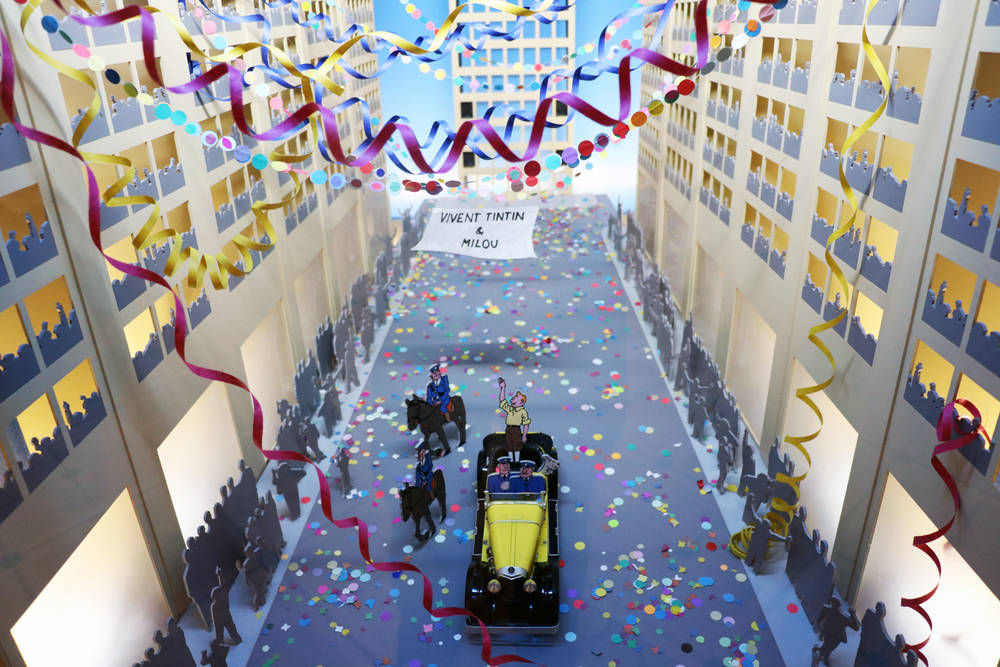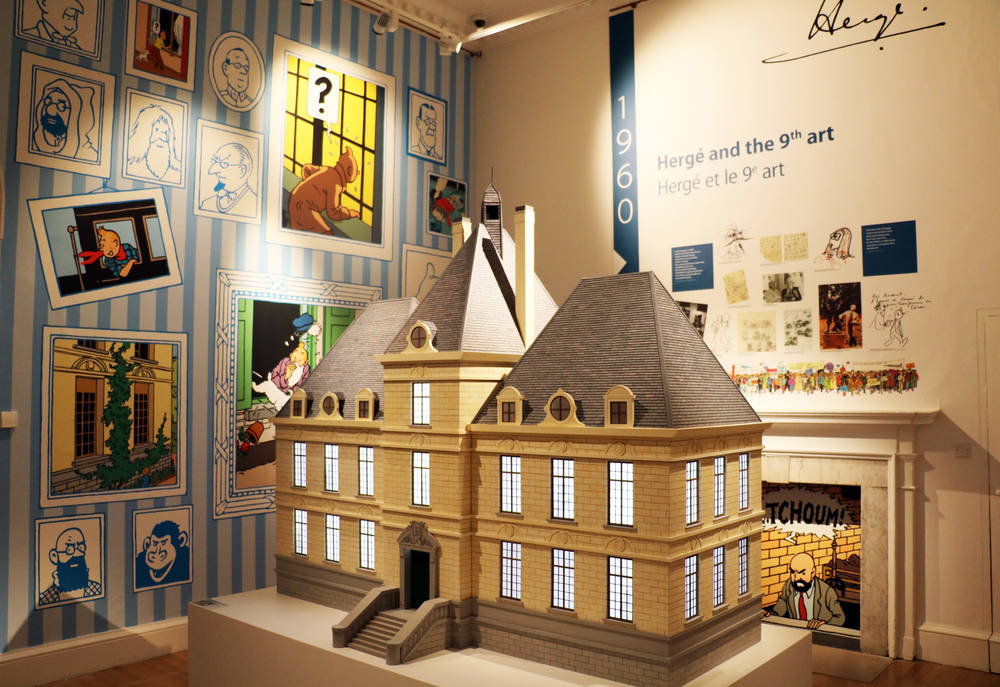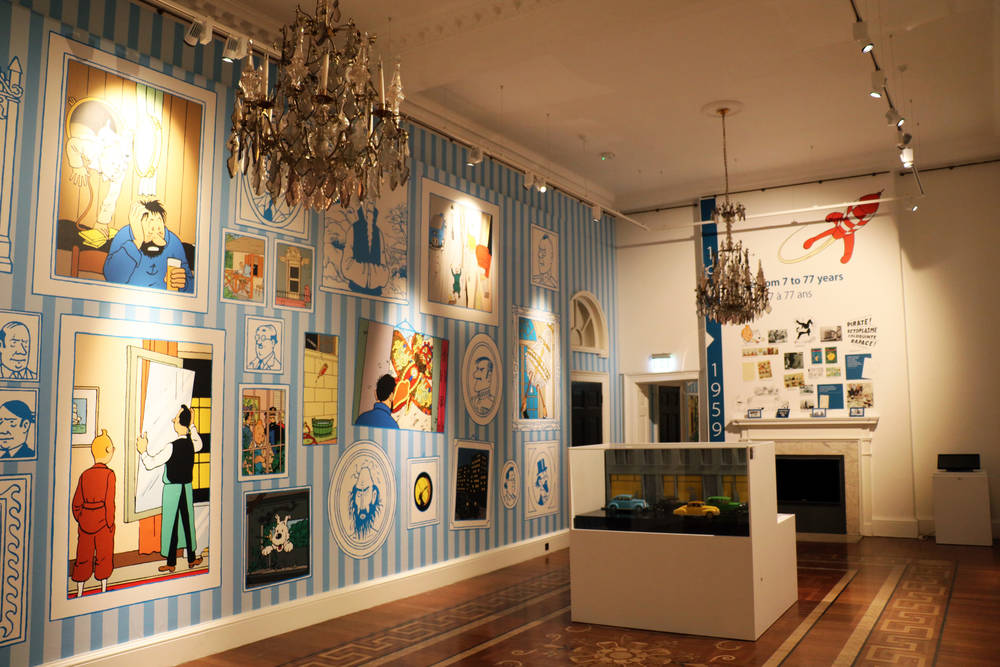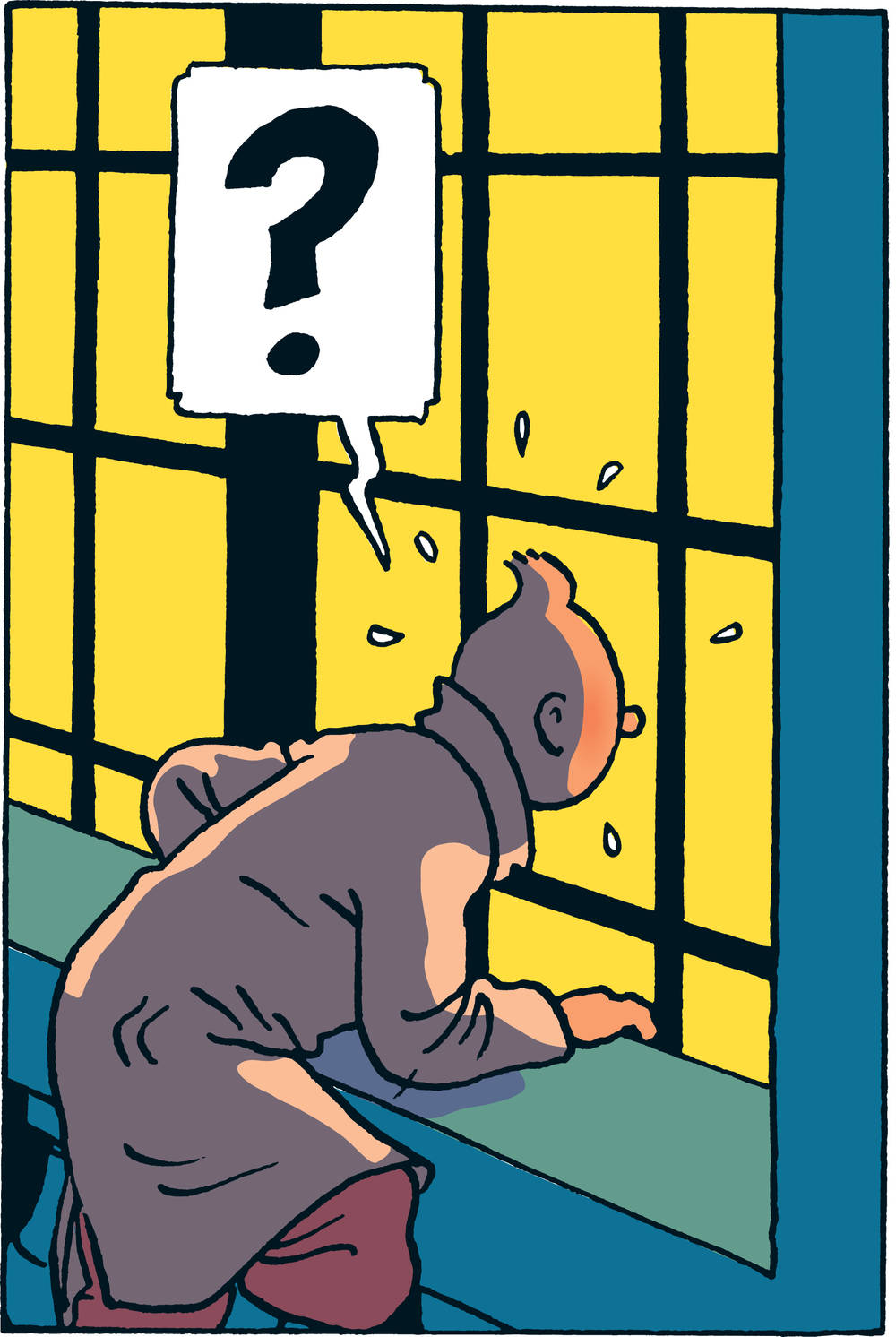Paying close attention to detail, London’s Somerset House is showing the universe of one of the most influential comic characters in history in its "Tintin: Hergé’s Masterpiece" exhibition.
Should others take over Tintin, they might do it better than me, or maybe not. One thing is certain, they would do it differently and, at the same time, it wouldn’t be Tintin anymore.
With such factuality and correctness, Georges Proper Remi, better known under the pseudonym Hergé, once commented on the future of the adventurer and cult reporter Tintin he had created years before. The potentially most famous Belgian export has been solving crimes with his white fox terrier Snowy since 1929 and made it from a supplement of newspaper Le Vingtième Siecle to an independent comic book, into international television and, on various occasions, even onto the big screen – most recently in Steven Spielberg’s surprisingly charming 2011 animated movie The Adventures of Tintin: The Secret of the Unicorn. Reason enough to read between the speech bubbles.

Drawing on the archives of Belgium’s Hergé Museum, Somerset House has put together an exhibition showcasing everything from character sketches in pencil to watercolours up to the finished comic book with Tintin: Hergé’s Masterpiece. Tintin and his social environment – one soon notices – live in a world which, despite being colourful, is informed by firm contours. Ligne claire, as pioneered by Hergé, provides the comic with stylistic precision and structure and hence bestows it with its typically European appearance. This way of painting is contrasted by American comics of the 1920s whose looseness and roughness are marginally perceptible in earlier works of the artist.
Hergé’s passion for architecture
The implementation of the graphic element has been executed particularly well by the curators at Somerset House: Windows and picture frames painted onto the walls reveal a view onto well-known characters and scenarios of the Tintin series and invite visitors to establish links between single windows in a similar fashion this occurs whilst reading the cartoon. This seems appropriate; given the window might be one of Hergé’s most significant architectural as well as narrative elements. Accordingly, Tintin is surprisingly often pictured eavesdropping in front of it, jumping out of it and observing antagonists – or being observed by them – through a window.


A special highlight is a small number of models created specifically for the exhibition, enabling visitors to perceive the world of the quirky reporter with his quiff and polished manners beyond the white borders of the comic, in three dimensions. From Tintin’s frugally and emblematically furnished flat to the magnificent Marlinspike Hall, which is acquired by the exquisitely human supporting character Captain Haddock and modelled after the classically-baroque Château de Cheverny in the town of Blois, France; the installations provide the symbolic of the popular comic strip with three-dimensionality and a way of projection.
On excursion with Tintin
Hergé’s passion for architecture, but also for art and design, can hardly be overlooked in the London exhibition. Photographs show him posing with a statue of Tintin, cast by sculptor Nat Neujean in 1975, with Andy Warhol in front of a series of pop art portraits Hergé modelled for and a quotation speaks of the curiosity and admiration the Belgian master felt towards American artist Alexander Calder’s mobiles: "They consist of elements of light metal, assembled by thin wires. When hung from the ceiling, the slightest draught will make them move. They are graceful, light and extraordinarily poetic."

Aside from visual inspiration, it becomes clear, Hergé only slowly became accustomed to conducting in-depth research on the countries and cultures that served as settings for Tintin’s excursions. Similar to fellow Belgian artist René Magritte, Hergé entertained a certain aversion towards travelling and based his depictions on sources from media coverage and the world of movies. Not without good reason, the Belgian has been accused of a lack of perceptiveness and resulting sensitivity in his lifetime as well as today. First and foremost, the Tintin in the Congo book published in 1931 and featuring a subliminally colonial tone, has been giving critics reason for concern from day one.
Sometimes naive, never xenophobic
Likewise, the representation of American Jews in The Shooting Star, which wasn’t the first time Hergé’s oeuvre had been associated with anti-Semitic attitudes, is questionable. The story was published between October 1941 and May 1942 in the Belgian Le Soir, which had been subordinate to the Nazi regime during this period, and preceded the deportation of Jewish inhabitants of Belgium only by a few months. In spite of everything, Hergé was no racist: A photograph shows him and his close acquaintance, Chinese sculptor Zhang Chongren in front of the Arcade du Cinquantenaire in Brussels. By his own account, it was this friendship and the profound cooperation on The Blue Lotus which led the comic maker to realize the importance of authentic, cultural research for his work and along the way inspired him to create Tintin’s close friend, the character Chang Chong-Chen. Hergé’s intention, albeit sometimes naive, was never xenophobic.

Whence Daniel Richter’s path?
Can the artistic development of painter Daniel Richter right up to his latest works in the SCHIRN be traced back to his teachers and thus divided into...

The Philosophy of Facebook: identity, objects and/or friends?
In her essay, Dr Katie Ellis, Senior Research Fellow at Curtin University Australia explores the question what constitutes our identity in the...